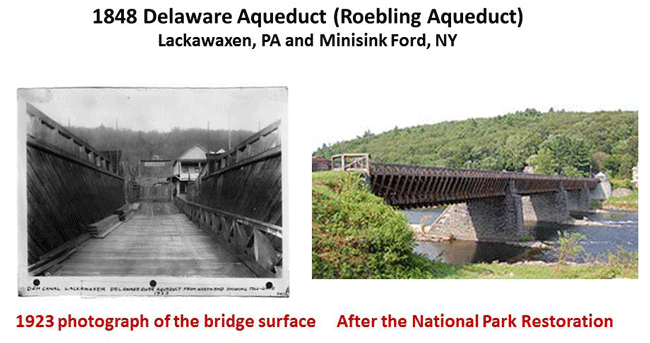Failures in metallic components may be caused by any of the following factors or combinations of factors:
- Design shortcomings
- Imperfections due to faulty processing or fabrication
- Overloading and other service abuses
- Improper maintenance and repair
- Environmental factors
Not all failures are catastrophic. Many failures involve a gradual degradation of properties or excessive deformation or wear until the component is no longer functional. Failures due to wear or general corrosive attack usually are not spectacular failures, but account for tremendous material losses and downtime every year. Of course, early failures of the spectacular catastrophic order capture the most attention-and rightly so. Nevertheless, all failures deserve the attention of the investigator because they reduce production efficiency, waste critical materials, and increase costs. In some instances, they cause considerable damage or personal injury. Finally, failures can result in costly litigations.
Unfortunately, both industry and the university have generally failed to put sufficient emphasis on the need to develop and encourage the science (or art) of performing service failure analysis and the dissemination of such information. In some situations, investigations are carried out, but the manufacturer concerned may not wish to share the resulting information publicly. At other times, there is probably no reluctance to share such information, but reporting channels are inadequate for making such information available to those who could benefit and, in turn, provide feedback. Finally, even within a given’ organization, failure analysis data and conclusions may not be adequately communicated to the designers so that they can implement design changes aimed at developing an improved product, or to the operations personnel so that they can eliminate processing problems and improve quality control.
Not all failures require a comprehensive, detailed failure examination. With many types of “routine” failures, the procedure can be simple and still be effective. Most manufacturers are receptive to constructive criticism regarding their products. Few manufacturers today adhere to the old philosophy that their product is never at fault.
Individual background, including the area of specialization and professional experience, certainly influence the manner in which an examination is performed. For example, the civil or mechanical engineer may perform a very careful examination of the stresses and loads causing the failure, but may not devote much attention to the metallurgical factors. By the same token, the metallurgist may carefully sort out all of the important material aspects of the failure, but may examine the mechanical aspects only superficially. Similar imbalances in approach may occur when operating personnel, welding engineers, or corrosion engineers conduct the examination. Since few engineers would be fully knowledgeable in all of the possible interacting disciplines that can be involved in a given failure, a team effort is often the only approach that can produce a complete picture of the failure causes.
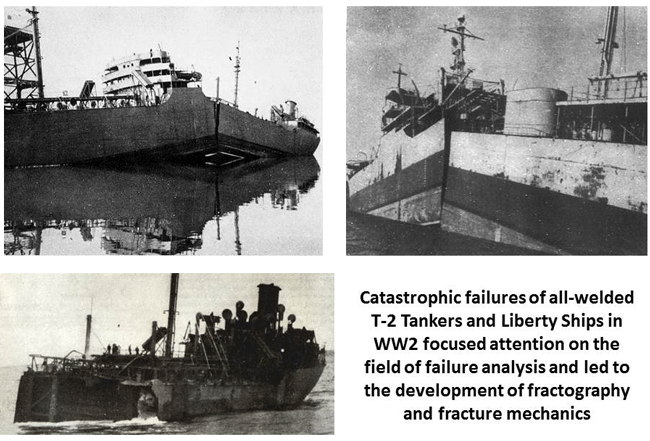 BASIC APPROACH TO FAILURE ANALYSIS
BASIC APPROACH TO FAILURE ANALYSIS
First and foremost, the investigator should not approach the examination with preconceived notions about the causes of failure. The examination itself should be designed to test a broad range of conditions, yet not be so exhaustive as to become impractical because of excessive expense or time. Design of the investigation includes proper sequence of the selected tests; for example, a wrong sequence can introduce artifacts or mask and even destroy important evidence. Even a well-designed examination can fail of its purpose unless it is conducted carefully and systematically.
When the series of tests has produced data that pinpoint problems, the job is still not finished. The investigator should, whenever possible, include in his report specific recommendations aimed at eliminating the problems through alternate designs, materials, processing, heat treating, or fabrication techniques. He should review these recommendations with the designer, manufacturer, stress engineer, or other specialist so that these changes will produce the desired results and will not cause other problems. Potential problems in similar components should be investigated so that corrective action can be taken to prevent similar failures.
FAILURE ANALYSIS PROCEDURES
The basic steps to be followed and the range of techniques available for failure analysis are outlined below. Those steps requiring additional detail are expanded on in subsequent sections. The basic steps, as listed below, may not all pertain to each investigation, and the order of performing these steps will vary somewhat, depending on the nature of the investigation.
Assemble background data, including:
- All information pertaining to the failure
- The history of the part, i.e., processing and service
- Pertinent codes, specifications, and standards
Perform visual examination of the failure area and adjacent areas to determine and to photographically or schematically record:
- Origin of failure
- Presence of stress concentrators
- Presence of temper color or scale on fracture faces
- Orientation and magnitude of stresses
- Failure mode and mechanism
- Direction of crack propagation and sequence of failure
- Presence of contributing imperfections
- Sizes and other physical data
Perform fractographic examination.
Perform chemical analyses, and compare results with specification or standards. Analyze any important surface corrosion products, deposits, or coatings.
Determine mechanical properties, and compare with specifications or standards.
Perform macroscopic examination to evaluate homogeneity, integrity, and quality.
Perform metallographic examination to evaluate microstructural features. Determine the hot-working direction of wrought products and its relationship to the stress orientation.
Perform microhardness testing to measure case depths, evaluate cold working, determine quality of weldments, and aid in identifying phases.
Perform high-magnification metallographic examination using the electron microscope to study phases unresolvable with the light microscope.
Microprobe any critical abnormalities, such as inclusions and segregations, which are too small for bulk analysis.
Use X-ray techniques to determine:
- Level of residual stress
- Amounts of phases with different crystallographic structures, in particular, retained austenite in martensite and delta ferrite in austenite
- Presence of sigma phase, identification of carbides and compounds.
Perform simulation tests to evaluate critical characteristics of the material (such as the stress-corrosion cracking tendency in a particular environment), to determine the degree of embrittlement, or to confirm the method of heat treatment or hardenability.
Summarize and analyze all pertinent data. Consult with experts when necessary.
Write the report and distribute it. The report should include recommendations to prevent future problems or problems in similar existing equipment.
Follow up on these recommendations.
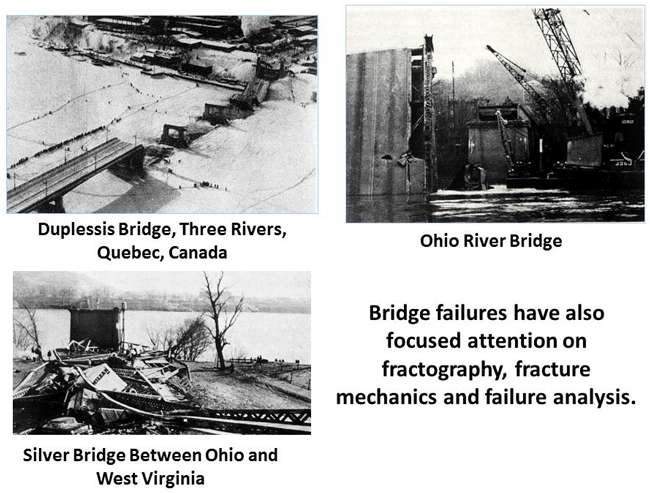 Assembling Background Data
Assembling Background Data
Before the investigator can intelligently select those tests and procedures by which he can best analyze the failure, he must first develop a complete case history of the component, including details of the failure and information about the manufacturing history. Important items to be determined are listed below.
Information about the failed component:
- Location, name of item, identifying numbers, owner, user, manufacturer, fabricator
- Function of item
- Service life at the time of failure
- Rating of item, operating levels, normal and abnormal loads, frequency of loading, environment
- Materials used
- Manufacturing, and fabrication techniques used, including specifications and codes governing the manufacturing, fabrication, inspection, and operation of the component
- Normal stress orientation, operating temperature range, pressures, speeds
Strength and toughness - Heat treatment, stress relief, or other thermal processing
- Fabrication procedures, such as welding, adhesive joining, coatings, bolting, riveting
- Inspection techniques and quality control reports during manufacturing; service and maintenance records.
Information about the failure:
- Date and time of failure, temperature, environment
- Extent of damage, sequence of failure, injuries
- Stage of operation when failure occurred
- Blueprints, photographs, or sketches of the failure, and adjacent areas
- Any service deviations that might have contributed to the failure
- Opinions of operating personnel regarding the failure
The investigator should carefully study available blueprints and other graphic records to obtain a comprehensive picture of the failed component. Such information will also be helpful in evaluating stresses. Whenever necessary, the investigator should go to the location of the failure for first-hand examination so that he can select critical areas for examination. If it is at all possible, the investigator should go to the failure site or get the failed component promptly-before the structure and appearance of the material have changed because of handling, repair attempts, corrosion, or other factors.
While developing the case history of the component, the investigator should familiarize himself with the materials, the processing, and the fabrication techniques employed in manufacturing the component. Time spent researching unknowns usually pays off during the investigation.
Visual Examination
Before the investigator proceeds to the visual examination he should ask whoever reported the failure to protect the component from further damage. Sometimes important evidence has already been destroyed by rough handling or exposure to corrodents before the investigator sees the failure.
Throughout the visual examination phase of the failure study, all significant information should be properly recorded or photographed so that the information can be shown and described to all concerned parties. Color photographs are occasionally required to show contaminants, scorch, and temper color. Every possible piece of information should be squeezed out of the sample before any destructive testing is performed. Too frequently, the investigator cuts up the specimen before performing adequate visual examination. Location and orientation of any samples cut from the failed component should be carefully recorded. Care should be taken during sectioning, grinding, polishing and even handling to avoid creating artifacts that could lead to false conclusions. (Metallographic techniques are described in vol 8 of the ASM Metals Handbook, 8th ed.)
The investigator should preserve the fracture initiation areas as it was at the time of failure. For example, any saw cutting, radiac cutting, or burning should be done well away from the fracture initiation area. The fracture face should not be touched by any liquid, and should be kept dry and clean. If the part must be shipped, it should be carefully packed so that the fracture face does not rub against other pieces and stays dry during transit. Since the original microstructure, mechanical properties, and fine fracture features are altered by tempering, a very hard piece should not be tempered back for the sake of saw cutting. Rather, radiac cutting or some other techniques should be used that will not alter the as-received condition. Burning (i.e., oxyacetylene or plasma-arc cutting), if used, should be done far enough away from the fracture so that the heat does not alter the conditions.
If the fracture face is severely altered by corrosion, fire, or rubbing, the failure analysis may be severely impaired. Mild corrosion and dirt or grease can easily be removed to allow accurate macroscopic examination and fractography. (Fractographic techniques are described in detail in vol 9 of the ASM Metals Handbook, 8th ed.) If the fracture is heated by fire or by tempering, the fine features will be destroyed, but the macroscopic appearance will still be visible. Rubbing of the fracture face will obliterate the fine features and, in many instances, the macroscopic features. If fractography is to be performed, fracture faces should not be remated since this will almost invariably disturb the fine features and make fractography impossible.
Careful macroscopic examination is extremely important. Obviously, the origin or origins of failure must be determined if any conclusive results are to be obtained. When properly interpreted, fracture features describe the manner of loading, the level of the applied stress, the mechanism involved, and the relative ductility or brittleness of the material. Fracture features frequently reveal other details, such as the presence of hardened cases, apparent grain size, and internal imperfections. Presence of design-induced stress concentrators, material imperfections, fabrication imperfections, or machining imperfections which serve to locate the failure should be detected during visual examination. Techniques such as magnetic particle inspection or dye-penetrant inspection may be required to detect or bring out tight surface defects. Ultrasonic examination or radiography may be required to detect and locate internal defects so that they can be sectioned and examined.
Following is the usual sequence of operations in the examination of fractured components:
- Visually survey the entire component to obtain an overall understanding of the component. Where needed, photograph significant details.
- Classify the failure from a macroscopic viewpoint as ductile, brittle, fatigue, torsion, and so on.
- Determine the origin of failure by tracing the fracture back to its starting point or points.
- Based on the fracture features, estimate the manner of loading (tension, compression, bending, etc.), the relative stress level (high, medium, or low), and the stress orientation.
- If high-magnification examination is required, use fractographic techniques to determine the fracture mode (transgranular or intergranular) and to detect other characteristic features associated with the fracture. Fractography can also be used to confirm the fracture mechanism by observation of the various dimple types, facets, striations, river-marks, etc. In this manner, the behavior of the material under the environmental and stress, conditions can be evaluated.
Macroscopic examination of discs cut from the failed component at random locations or at failure initiation sites can often be extremely helpful. Such examination after macroetching will enable the investigator to evaluate or observe the following:
- Internal quality
- Hydrogen flakes
- Segregation
- Surface cases
- Hard or soft spots
- Depth of hardness penetration
- Flow lines
- Weldments
Grinding scorch, bruises, and other surface damage can be brought out by macroetching the surface of the failed component. Special print techniques (such as sulfur, oxide, lead, and phosphorus prints) are useful for revealing the distribution of these elements in the examined section.
Not all failures involve fracture. For example, many failures occur as a result of an excessively high wear or corrosion rate. Such failures can be quite difficult to analyze because the deficient metal is no longer present. Then, the study must be based on properties of the remaining material. However, it should be borne in mind that this material will not always be representative of the missing material.
Wear and corrosion failures are difficult to analyze because many factors, some of which may not be obvious, influence these problems. Wear failures, which can be broadly classified as adhesive or abrasive wear, are complex problems. The wear rate depends on many factors: the materials used (both contact surfaces), load, temperature, sliding velocity, surface finish, and manner of lubrication, if any. Identification of the type of wear problem through visual examination is a very important first step in the failure examination.
Many corrosion failures do not involve fracture. For example, a common end result of a corrosion failure is leakage. Several different mechanisms may initiate leakage failures-e.g., galvanic corrosion, crevice corrosion, pitting, selective leaching. General corrosion may cause excessive weight loss that weakens a component until it deforms or cracks under load. Other types of corrosion mechanisms (such as intergranular corrosion, stress-corrosion cracking, corrosion-fatigue and caustic embrittlement) are generally associated with corrosion failures involving fractures. At any rate, not only careful visual examination, but also other tests described later are necessary to determine the corrosion mechanism responsible for the failure.
Whatever subsequent tests are called for, visual examination remains the cornerstone of any failure examination.
Microfractography
Macroscopic fracture examination is often insufficient properly evaluate fracture modes in nonferrous metals and cast iron. Stress-corrosion cracking and fractures involving corrosion cannot be conclusively identified through macroscopic examination alone. Material abnormalities showing up on the fracture face also tend to complicate macroscopic examination, thus requiring microfractographic examination.
Examination with the electron microscope or the scanning electron microscope (SEM) is, in some instances, the only effective way of defining the fracture mode and mechanism. The optical microscope does not possess sufficient depth of field to be entirely adequate for high-magnification examination of rough surfaces. The SEM permits much simpler specimen preparation and eliminates artifacts. Furthermore, when the SEM is outfitted with energy-dispersive analysis capability, it provides the ability to analyze inclusions or corrodents observed on the fracture face.
A more recently developed tool is the scanning Auger microprobe, which is capable of analyzing surfaces on an atomic scale. This tool is very useful in analyzing surface films and in detecting impurity segregation that causes temper embrittlement.
Microfractography makes it possible to study the rate of progress of the fracture and to characterize the ductility or brittleness of the material; the fracture mechanism can usually be easily discerned. Quantitative descriptions of the fracture history can also be made. In sum, microfractography is a very powerful tool; its application is frequently critical to the success of the failure examination.
Chemical Analysis
Because mixes occasionally occur at the mill, in the warehouse, or at the fabrication shop, and since such mixes can be the source of failures, a failed component should be chemically analyzed to determine whether the grade is indeed as claimed. A small percentage of all failures are caused by grade mixes.
In addition to analyzing the bulk composition of the material to verify the grade, the investigator may need to analyze surface contaminants by techniques such as X-ray diffraction and wet analytical procedures. The SEM and the electron microprobe may also be utilized. Basic analytical techniques are described in Part 32 (1973) of the ASTM Standards. The reader is directed to this source since a discussion of the factors governing the choice of a particular analytical technique for a given study is outside the scope of this article.
Material Properties
Once the loads that had been applied to the failed component are known, either through estimation or from records, properties of the materials must be evaluated to determine whether the material was capable of withstanding these loads. A good case history will often provide information such as whether the service load conditions were within those permitted by the material specifications and design considerations. In nearly all complex failure examinations, the investigator should determine the hardness and mechanical properties of the subject material and any other properties that relate to failure mechanisms, such as the toughness, endurance limit, creep strength, or stress-corrosion cracking tendency. Many test procedures have been developed to characterize the properties of materials, and the investigator should refer to vol 1 of the ASM Metals Handbook (8th ed) and to the appropriate ASTM Specifications. The measured properties are to be compared to the specifications and to typical property data for the grade to reveal any abnormality such as might result from improper processing or from embrittlement reactions.
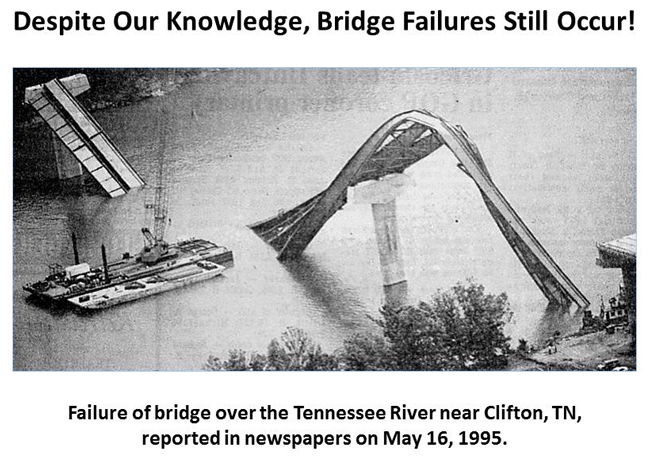 Metallographic Examination
Metallographic Examination
Metallographic evaluation is also extremely important in determining the cause of failure. Contributing factors are frequently observable only through metallographic examination; hence, metallographic examination should always be performed.
Microscopic examination enables the investigator to evaluate the microstructural features of the failed component. The microstructure exerts a strong influence on the properties of the material and their behavior during service. Frequently, this examination can pinpoint errors made during processing, heat treatment, surface treatments, casting, and welding. Microstructural evaluation is very helpful in determining what processing methods and treatments were actually performed on the component, or whether scheduled processing steps were accidentally omitted or incorrectly performed. Microhardness testing can also be an important aid; it can be used to evaluate surface phenomena, aid in identifying microstructures, evaluate local cold working, test very thin materials, or evaluate weldments.
Electron Microscopy
The transmission electron microscope enables the metallographer to examine fine features of the microstructure that are not resolvable with the light microscope. Thus, it is frequently used to determine pearlite spacing or interparticle spacing. The selected area diffraction technique can be used to identify precipitates. Interfacial relationships between the matrix and precipitate phases can also be determined. Precipitation reactions can be studied, and the extent of recovery, recrystallization, or grain growth can be evaluated. In fact, the study of such features as dislocation density or radiation damage requires the electron microscope.
Electron Microprobe Analysis
Electron microprobe analysis is often required to identify unknown features observed during optical microscopic examination. It is very useful in identifying complex inclusions, scale, surface layers, coatings, concentration gradients, phases, precipitates, and segregates. However, the microprobe is restricted to the examination of polished specimens.
X-ray Techniques
A number of X-ray techniques are available for failure analysis. With the Debye-Scherrer camera one can identify corrosion products and phases in refractories or minerals. The diffractometer can be applied to either qualitative or quantitative chemical analysis by indexing with the Hanawalt method or by using fluorescence analysis. Orientation of the matrix and precipitate phases can also be determined. Surface deposits can be analyzed by the reflection method or by diffraction. Chemically extracted second-phase particles can be identified by diffraction. The diffractometer is used to make residual stress measurements, and to determine the amount of cold work during processes such as skin passing of sheet steel. Deformation textures can be determined using inverse or full pole figures. With the direct-comparison method, the diffractometer can be used to determine the amount of phases present, such as retained austenite in heat treated steels or ferrite in austenitic steels.
Simulations
Occasionally, the investigator must simulate the environmental conditions encountered during service to ascertain suitability of the material to environmental conditions, and to determine the effect of prior heat treatment or other processing on the service performance of the material. For example, improper heat treatment may render the material susceptible to certain types of attack. Simulation of the heat treatment as reported in the case history is valuable for both confirmation purposes as well as for further testing, particularly on a comparison basis (e.g., comparison of the toughness of the failed material as-received and after various experimental heat treatments). Certain types of simulation tests require accelerated testing to obtain the desired information in a reasonable length of time. Interpretation of accelerated test data must be done with care.
When feasible, examination of similar components which did not fail in service can be most helpful in evaluating the significance of anomalies observed during the study. Simulations may also be performed on the acceptable part, and results are compared to similar test data on the failed component.
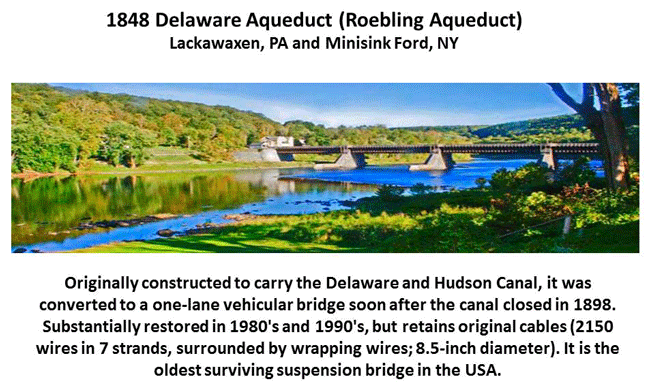 Analyzing the Data
Analyzing the Data
While performing the analysis, the investigator should cross-check each of his observations against the history of the part, and note any contradictions. It is frequently just such contradictions that reveal a possible cause of failure. In evaluating these factors and assessing their significance, the investigator should draw not only on his experience, but also on pertinent disciplines other than his own special field.
After completion of the above procedures, the metallurgist is ready to interpret and summarize the facts he has gathered. The absence of certain features is often as important as the presence of these factors. Most failures are caused by more than one factor, although frequently one factor may predominate. Again, the metallurgist should make use of his own knowledge and experience as well as that of others in establishing and rating the importance of these factors. Occasionally, given the nature of the data or the theoretical state of knowledge about the particular causative mechanisms involved, the final conclusion may simply be a matter of the investigator’s best judgment as to the most important factor, and should be so stated in the report.
Examination of the failure and a study of the various conditions pertaining to the design, operation, and environment should raise certain questions:
- What was the sequence of the failure? The speed? The path?
- Were there one or more initiation sites?
- Did the failure initiate at or below the surface?
- Was the failure located by a stress concentrator?
- How long was the crack present?
- What was the intensity of the load?
- Was the loading static, cyclic, or intermittent?
- How were the stresses oriented?
- What was the failure mechanism?
- What was the approximate temperature at the time of failure?
- Was the temperature important?
- Was wear a factor?
- Was corrosion a factor? What type of attack?
- Was the proper material used? Is a better material required?
- Was the cross section sufficient?
- Was the material quality acceptable for the grade and specifications?
- Was the component properly heat-treated?
- Was the component properly fabricated?
- Was the component properly assembled, aligned, etc.
- Was the component repaired during service? Properly?
- Was the component properly run in?
- Was the component properly maintained? Lubricated?
- Was the failure caused by a service abuse?
- Can the design be improved to prevent similar failures,?
- Are failures likely in other similar pieces of equipment or units?
- What can be done to prevent failures in them?
In combination, the various types of investigations we have previously listed will, in most instances, enable the metallurgist to answer most of these questions. Since the cause or causes of failure cannot always be determined with certainty no matter what the investigator tries, he should state what he considers to be the most probable causes or factors together with the other legitimate possibilities. In any event, it should be made clear which findings are based on demonstrated facts and which conclusions are of a more conjectural nature.
The report analyzing the failure should be written in a clear, concise, logical manner. It should be clearly structured with sections covering the following:
- Description of the failed item
- Conditions at the time of failure
- Background history important to the failure
- Mechanical and metallurgical study of the failure
- Evaluation of the quality of the material
- Discussion of any anomalies
- Discussion of the mechanism or possible mechanisms that caused the failure
- Recommendations for the prevention of future failures or for action to be taken with similar pieces of equipment
Extraneous data should be omitted, and, depending on the nature of the problem and the data, not every report will need full treatments for every one of the sections listed above. Many times, the readership may include purchasing, operating or accounting personnel who are not technically trained. If this is the situation, the report should be written so that it is comprehensible to these persons. At least, those sections of the report that bear on their decision-making or informational needs should be written in language that is accessible to them. Frequently, a cover letter summarizing the most important findings and the suggested action is a good vehicle for reaching top executives who are not as interested in the technical specifics but need key findings and recommendations as a basis for decision making.
Follow-up on the recommendations is frequently a difficult task, but should be undertaken for the more critical failures. Cooperation between the investigator, the designer, the manufacturer, and the user is crucial in developing good, workable changes.
CONCLUSION
Those who frequently conduct failure examinations agree on several main points. Most failures could easily be prevented if certain well-documented precautions had been taken. Many failures occur as a result of fatigue, and one or more of the following may play a decisive role: original design deficiencies, material inadequacies, machining or fabrication imperfections, abuse or neglect, improper maintenance, improper repairs, and metallurgical factors such as decarburization. Heat-treatment irregularities are another major contributing factor in failures.
Performing failure analyses is an exceptionally challenging and exciting job. The investigator must have a sound background in the areas that are central to his testing and analytical work, and must also be knowledgeable enough to know when to call on other fields of specialization that interface with his work. New problems are always encountered which tax the ingenuity of the investigator, and they will sharpen and expand his skills if he is willing to go on learning. By the same token, analysis of failures by many investigators in the ferrous and nonferrous metal industries here and abroad has, over the years, expanded the practical knowledge for processing and product developments, and also contributed to basic scientific insights..
George Vander Voort has a background in physical, process and mechanical metallurgy and has been performing metallographic studies for 48 years. He is a long-time member of ASTM Committee E-4 on metallography and has published extensively in metallography and failure analysis. He regularly teaches MEI courses for ASM International and is now doing webinars. He is a consultant for Struers Inc. and will be teaching courses soon for them. He can be reached at 1-847-623-7648, EMAIL: georgevandervoort@yahoo.com and through his web site: www.georgevandervoort.com
To View a listing of all George’s articles please click here
Read George Vander Voort’s Biography

